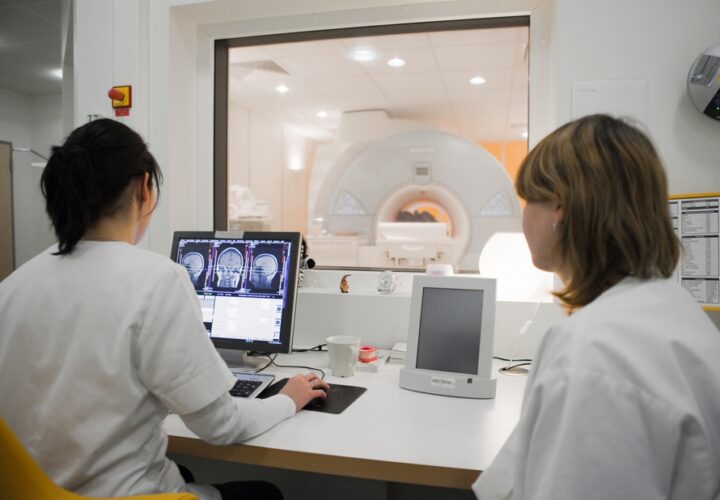For scientists searching to find a cure for Alzheimer’s, clinical trials are essential. Testing the drugs that have been decades in the making is the only way to gauge whether they might make a dent in the fight against Alzheimer’s.
But finding people to join clinical trials isn’t as easy as it sounds. According to The Global Alzheimer’s Platform Foundation, which helps recruit patients for clinical trials, a pool of up to 18,000 people will be contacted to fill 375 spots. And a good portion of those people must undergo expensive tests—brain scans, cognitive thinking tests and lab work—in order to qualify. Research shows that while 60 percent of Americans are willing to sign up for Alzheimer’s clinical trials, only 10 percent actually do.
So what is it really like to be in a clinical trial? We got the inside scoop from Dr. William Burke, M.D., who runs an Alzheimer’s and memory research center in Arizona.
I have the privilege of directing the Stead Family Memory Center at Banner Alzheimer’s Institute in Phoenix, Arizona. This is a unique memory center that includes a clinic that helps diagnose and treat cognitive problems, a family and community services program to guide and educate families dealing with dementia, and a robust clinical trials research program. The research program focuses on finding and testing promising new medications for the treatment or prevention of dementia, as well as other studies designed to help us understand the intricacies of the disease.
Once we have reached a clear diagnosis in our clinic, patients are offered an opportunity to participate in clinical research. Motivations for participation are varied. Some wish to participate so that better treatments are available for the next generation. This coincides squarely with one of our mission statements: to end Alzheimer’s without losing another generation. Others hope that by participating, they will be one of the first to receive a treatment that is effective and become a survivor of this terrible disease.
Once we know that the person with dementia and their family are interested in research, we need to figure out what studies would be the best fit. This is what I like to call the blind date stage. We work to determine the right study for someone based on their stage in the disease, age and amyloid protein status, among other factors. We match up these personal characteristics of the patient with the varying requirements to participate, called exclusion and inclusion criteria. This early stage of consideration is called “pre-screening” and its purpose is to make sure that the potential participant is a good match for an available study. At this point we also provide more background information about the study that can be reviewed at home in preparation for a more detailed and formal review of a study.
If no issues are identified we can begin the process of informing the patient and family about details of the study. We refer to this as “informed consent,” which is done with a member of the study team. There is a document which contains details about the study procedures, study drug (if it is a study medication trial), risks, benefits and alternatives to participating. It is a lengthy document to ensure that each piece of the study is discussed before participation begins. We like to emphasize that informed consent is not a one-time event but an ongoing process that occurs throughout the entire study. Participation is completely voluntary and can be stopped at any time without needing to provide a reason to opt out. Those who decide to participate will then sign the informed consent document (or in some cases their study partner—usually a spouse or loved one—signs) and keep a copy to reference.
Once a patient consents, the research team will initiate study participation as outlined in the study protocol. The protocol is unique for every study and is a highly detailed road map for how the study will be conducted. This protocol is reviewed by regulatory authorities and ethics committees before the study begins and is a blueprint for every study visit that occurs. This detailed set of instructions ensures that the study is conducted the same way at all study sites and provides additional safeguards for participants.
A typical study begins with another screening period to confirm that the person is indeed a good fit for the study protocol. Screening usually includes a variety of procedures such as tests of cognition, laboratory tests, brain imaging studies, ECGs (heart tracings) and physical and neurological examinations. If all those confirm suitability to participate in the trial, then the person enters the formal portion of the study, which in the case of an investigational drug study, involves the individual being assigned to a treatment group. These groups often consist of different dosage strengths of the study medication and a comparison placebo group. The placebo group is essential to confirm or refute the the performance of the study medication. Some people who sign up for drug clinical trials will end up in the placebo group, but there are benefits to being in that group, too. For people concerned about the chance of being in the placebo group, you can find more information here.
Assignment to a treatment group is randomized, meaning that the assignment is made by chance (like flipping a coin) to make sure that everyone has an equal chance to be in each group. This process is an attempt to remove any potential bias on the part of the investigator. When this random assignment is done with large numbers of participants, it also usually results in the participants across each group being similar in characteristics like age, marital status and cognitive abilities.
The remainder of the study includes scheduled visits to check on participant safety to gauge whether there are side effects that affect the patient’s health and additional testing to track the patient’s progress. It’s also a good time to ask more questions. At our site, for example, participants will have access to a medical provider, one or more research coordinators and professionals conducting cognitive testing. Additional lab tests and brain imaging may be done. Studies are quite different in terms of their length. Some investigations of new brain imaging techniques might be a single session. On the other end of the spectrum, we have Alzheimer’s disease prevention trials which may last 7 years.
With participant permission, we do our best to let their primary care physician know that the patient is participating in a study and will pass along any relevant laboratory results like PET scans or cognitive test results that are identified. When the study is completed, we send a letter to the patient’s doctor summarizing their participation.
I have been an investigator in clinical trials for Alzheimer disease for more than 30 years, and the basics of research participation have changed little over that time. However, now we know dramatically more about the brain and about the disease process. We have investigational study drugs that can fundamentally impact the proteins that accumulate in the brain and define the disease, amyloid and tau. We also have now identified risk factors for developing Alzheimer’s that have allowed us to launch innovative trials aimed at stopping the disease before it starts. Banner Alzheimer’s Institute is at the forefront of these potential groundbreaking studies which focus on persons with the ApoE4 genetic risk factor, which has been shown to be the greatest genetic risk factor that we know of.
This is an incredibly important time in Alzheimer’s research. The National Institutes of Health has committed more funds to research than at any time in the past. The primary obstacle that most studies face is recruiting persons who want to participate in studies.
If you would like to get more information about joining a clinical trial, you can sign up for the Alzheimer’s Prevention Registry or register for genetic testing that qualifies people for research through our GeneMatch and GENERATION programs. The author is affiliated with those programs and the information published on this page reflects his professional opinion.




I just passed 3 years in the A4 trial. I enrolled because I wanted to be part of finding a cure and also spare my children from watching a loved one decline if possible. I’ve gained a wealth of knowledge about altering my life style, being proactive in health choices, learning my genetic risk and keeping abreast of scientific research. Knowledge is power. I’ve also had a PET scan, 3 MRIs, countless blood tests, EKGs and cognitive evaluations, all of which must be worth thousands of dollars. (I also received travel reimbursement, free parking and a nifty insulated A4 tote bag.) All of the researchers in the videos need participants for their double blind trials. Progress can’t be made without us, so don’t hesitate to sign up.
I may be interested in the research project, but wondering how much time will it involve and what are the tests I’ll need to do?
Thank you.